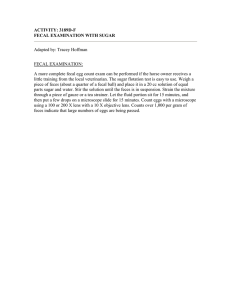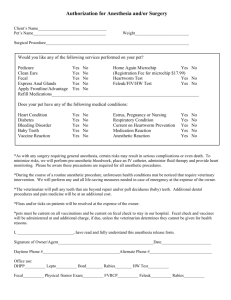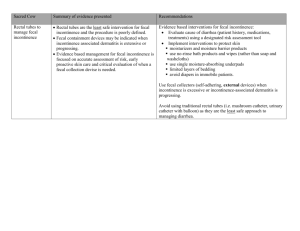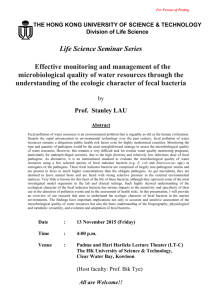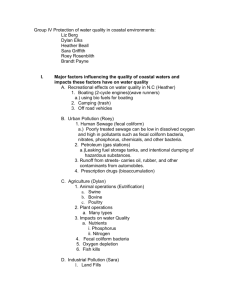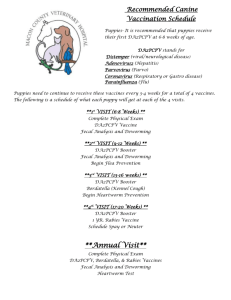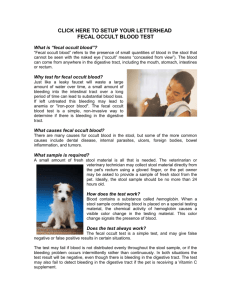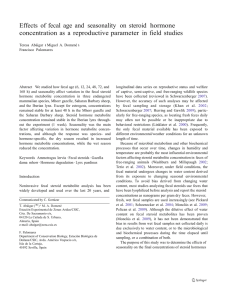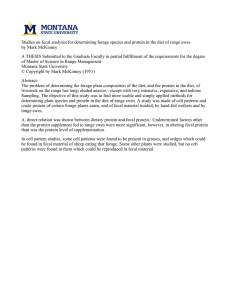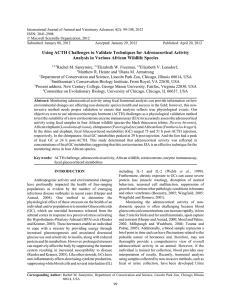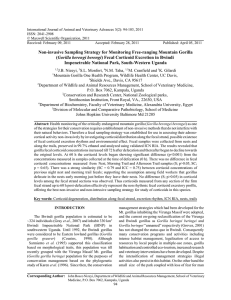Chapter 17 (Fecal Analysis).
advertisement
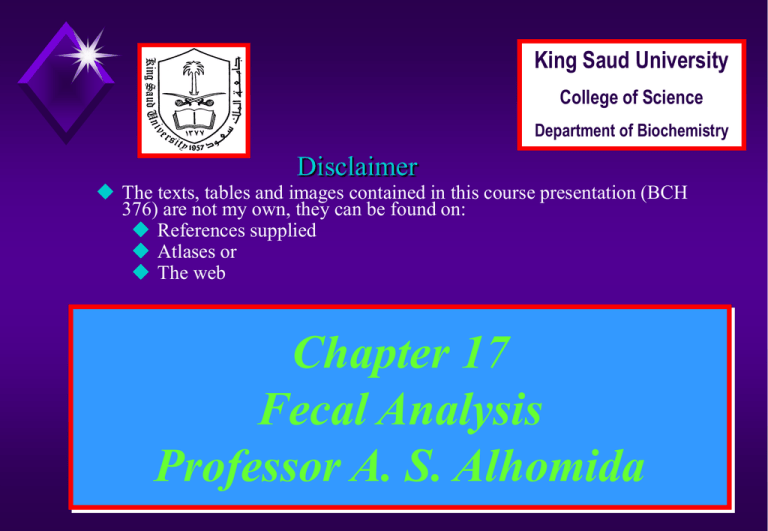
King Saud University College of Science Department of Biochemistry Disclaimer The texts, tables and images contained in this course presentation (BCH 376) are not my own, they can be found on: References supplied Atlases or The web Chapter 17 Fecal Analysis Professor A. S. Alhomida 1 Fluid Regulation in GI Tract 1. Approximately 900 mL of ingested fluid, saliva, gastric, liver, pancreatic, and intestinal secretions inter the digestive tract each day 2. 500-1500 mL of this fluids reaches the large intestine, and only about 150 mL is excreted in the feces (stool) 2 Fluid Regulation in GI Tract, Cont’d 3. Water and electrolytes are absorbed in both small and large intestines 4. Large intestine can absorb about 300 mL of water, when the amount of water exceeds this amount is excreted in the feces producing diarrhea 3 Fluid Regulation in GI Tract 4 Specimen Collection 1. Routine Specimens • Qualitative Testing 2. Timed Specimen • Quantitative Tests 5 Composition of Feces on an Average Diet Component % of Total Weight Water 75 Solid 25 % of Total Solids Cellulose & Other Indigestive Fiber Variable Bacteria 30 Inorganic Material (mostly Ca & Ph( 15 Fat & Fat Derivatives 5 6 Fecal Analysis Tests 1. Macroscopic Screening • • Color Appearance 2. Microscopic Examination • • • Fecal Leukocytes Muscle Fibers Qualitative Fecal Fats (Steatorrhea) 7 Fecal Analysis Tests, Cont’d 3. Chemical Tests 1. GI Tract Bleeding (Occult Blood ) 2. Quantitative Fecal Fat Tests 3. Fetal Hemoglobin (Apt Test) 4. Fecal Enzymes 8 Fecal Analysis Tests Chemical Tests, Cont’d 5. Carbohydrates 6. Liver diseases 7. Biliary duct disorders 8. Maldigestion and Malabsortion Syndromes 9. Inflammation 9 Fecal Analysis Tests 10 Macroscopic Screening Tests 11 Fecal Screening Tests 12 Fecal Pigments 1. Normal color of feces is influenced by both amount of uroblin present and the kind of food taken 2. Largely vegetable diet gives light-colored stools while one rich in meats gives darker, brown color 13 Fecal Pigments, Cont’d 3. Undigested portions of some vegetables may color the stools • Carrots Reddish-brown • Spinach Greenish • Fruits Bilberries, grayish-purple • Milk diet Pale-yellow or Orange 14 Abnormality of Fecal Compositions • Steatorrhea 1.Abnormality of absorption and digestion of lipids 2.It occurs when obstruction of flora of bile due to the biliary obstruction 3.Leads to increase fat content of stools 15 Abnormality of Fecal Compositions, Cont’d • Occult Blood 1. When bleeding is severe, the stools are dark color 2. Bleeding > 2.5 mL/150 g of stool is considered pathologically significant 3. In intestine, oxyhemoglobin is converted to hematin and porphyrins 4. Only hematin gives +ve results with fecal occult blood test 5. Ulcers and cancers of color give +ve results 16 Occult Blood Tests 17 THE END Any questions? 18
